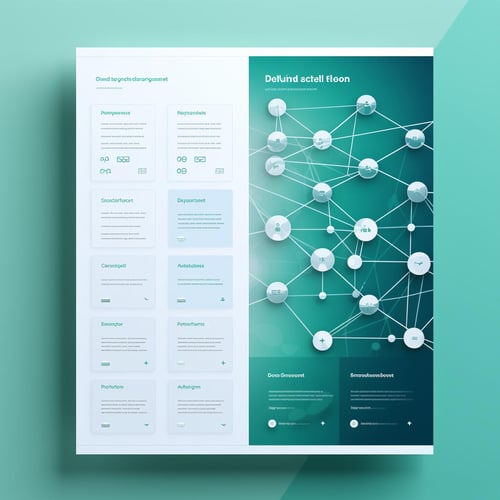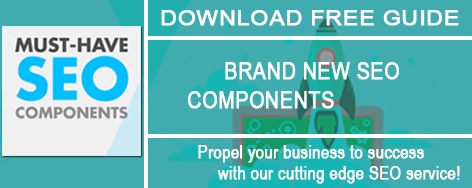Effective On-Page SEO: Enhancing Your Rankings
- Home
- Effective On-Page SEO: Enhancing Your Rankings
Mastering On-Page SEO can feel like navigating a labyrinth. Many website owners and content creators find themselves lost in the maze of keyword research, meta tags, URL optimization, the list goes on.
The truth is, without a solid understanding of On-Page SEO, your chances of reaching that coveted first-page ranking are slim to none. No wonder so many people throw up their hands in frustration or turn to an agency for their SEO Skills!
This doesn't have to be you.
Table of Contents:
- Understanding On-Page SEO
- Mastering Homepage Navigation Structure
- The Role Of XML Sitemaps In SEO
- Crafting Meta Descriptions For Better Click-through Rates
- Internal Linking Strategies For Improved Site Performance
- URL Optimization Techniques
- Prioritizing Site Speed And Its Impact On Technical SEO
- FAQs about On-Page SEO
- Conclusion
Understanding On-Page SEO

If you're aiming to enhance your brand's visibility and attract qualified leads, understanding the fundamentals of on-page SEO is crucial.
On-Page Search Engine Optimization (SEO) entails optimizing webpages to ensure they appear higher in SERPs.
Definition of On-page SEO
The process involves both content elements - ensuring valuable keywords are used appropriately throughout a webpage's text as well as technical aspects like meta tags or URL structure.
In essence, it's about making sure each page on your website tells Google what it needs to know: that this particular page offers high-quality information relevant to certain keyword searches by users.
Importance of On-page SEO
A successful on-page strategy helps search engines understand your overall content, improving chances for ranking highly with targeted keyword phrases.
- This increases organic traffic from SERPs;
- Promotes user satisfaction through delivering pertinent content,
- Fosters conversions into sales or sign-ups due to increased relevancy between site offerings and visitor interests.
Your business can benefit immensely from an effective on-site optimization approach when implemented correctly.
Moving forward, we'll delve deeper into one critical aspect of on-page SEO: designing an efficient homepage navigation structure.
Mastering Homepage Navigation Structure

The first impression is often the last, which also holds for your website's homepage. It acts as a gateway to your brand online, making its navigation structure crucial.
What is Homepage Navigation Structure?
A homepage navigation structure, in simple terms, refers to how information on your site is organized and accessed by users.
An effective homepage navigation design should make it effortless for users to locate what they need without feeling lost or disheartened - whether it be product information, contact details, or blog articles.
This enhances user experience and plays an integral role in boosting search engine rankings through improved dwell time and lower bounce rates.
How to Design an Effective Homepage Navigation?
To start with, keep it simple yet comprehensive. Overloading menus with numerous options may confuse users rather than assist them.
Aim for an intuitive user experience that even a novice can navigate without difficulty, categorizing pages into broader headings like 'Products' and 'Services'.
- Create clear categories: Group similar pages under broader headings such as 'Products', 'Services' etc., allowing easy access while keeping clutter at bay.
- Add Search Functionality: For large websites, especially e-commerce - having a search bar helps visitors locate specific items quickly instead of browsing endlessly.
- Prioritize Important Pages: Place the most visited pages like 'About Us' and 'Contact' towards the beginning or end since these are areas where eyes naturally gravitate when scanning left-to-right (F-pattern).
Incorporating these elements into your <nav> will ensure you're ticking all the right boxes from both usability & SEO perspectives.
Remember, there's no one-size-fits-all solution here. What works best depends largely upon individual business needs and audience preferences; hence continuous testing optimization remains key to achieving desired results.
Take cues from successful competitors and industry leaders. Use their designs to learn and adapt feedback analytics data over time to ensure continual improvement and overall performance effectiveness.
Designing an effective homepage navigation structure is crucial for your website's success. It should be simple yet comprehensive, with clear categories and a search bar for easy access. Prioritize important pages like 'About Us' or 'Contact'. Incorporating these elements will enhance user experience and improve SEO rankings.
The Role Of XML Sitemaps In SEO
As an advanced-level professional, it's essential to have a deep understanding of the complexities of SEO.
A key tool in your arsenal should be an XML sitemap.
Defining XML Sitemap
An XML sitemap, simply put, acts as a roadmap to all important pages on your website.
This digital guide assists search engines like Google and Bing in comprehending the structure of your site while crawling it more efficiently.
Writing & Submitting Your Website's XML Sitemap
- Determining which pages are most crucial to include. These could range from product or service descriptions to blog posts highlighting industry expertise.
- Including metadata about each URL, such as when it was last updated or how often changes occur, can provide additional context for crawlers.
- Using online tools such as Screaming Frog's XML Sitemap Generator simplifies this process by automatically creating these maps based on URLs you input.
- You can directly submit them via Google Search Console's 'Sitemaps' feature ensuring they get indexed quickly and correctly by one of the biggest players in web searching.
- Besides direct submission, adding its link at the footer section or including its path into robots.txt file also aids crawler bots in locating it easily during their routine checks across websites.
If well-executed, leveraging an optimized XML sitemap will not only help improve visibility but also drive organic traffic growth effectively. But remember - technical SEO isn't just limited here; there are other aspects worth mastering. Let's now delve deeper into another integral part: crafting compelling meta-descriptions.
Crafting Meta Descriptions For Better Click-through Rates

Meta descriptions play a crucial role in attracting clicks from potential customers browsing through search engine results pages (SERPs). But what exactly are they, and how can you write compelling ones?
Understanding Meta Descriptions
A meta description is a brief summary of the content on your webpage. It appears under the page title in SERPs. This snippet acts as a promotion for your material, offering people an idea of what they'll discover if they visit your website.
In terms of SEO value, while meta descriptions themselves aren't directly factored into Google's ranking algorithm, their influence on user behaviour can indirectly impact rankings.
Tips To Write Engaging Meta Descriptions
The art of crafting engaging meta descriptions lies primarily in understanding your audience and the intent behind their searches. Here are some tips:
- Create unique descriptions: Each page should have its distinct meta description that accurately reflects its specific contents.
- User-focused language: Use words that resonate with your target audience and reflect their needs or pain points.
- Action-oriented CTA: Encourage users to take action by using strong command verbs such as "Discover", "Learn", or "Try".
- Leverage keywords wisely: Incorporate relevant primary and secondary keywords naturally within the text without stuffing them unnecessarily.
Note that these guidelines don't guarantee success but will certainly increase chances for better performance on SERPS.
Internal Linking Strategies For Improved Site Performance

In the realm of On-Page SEO, internal linking is a powerful tool. It aids in enhancing page relevancy signals for search engines like Google.
Importance Of Internal Links In ON-PAGE Seo
The importance of internal links cannot be overstated. They act as bridges connecting different web pages within your site, facilitating seamless navigation and user experience.
Beyond this, they also help distribute link equity across your website's pages. This distribution plays an instrumental role in improving each page's potential to rank higher on search engine results pages (SERPs).
A well-executed internal linking strategy can significantly enhance how Google understands your site structure and content relevance, two key ranking factors that influence where you appear in search results.
Best Practices For Implementing Internal Links
To reap maximum benefits from internal linking, it's crucial to follow certain best practices:
- Analyze Your Website Structure: Prioritize creating a logical hierarchy with main categories followed by subcategories or individual posts/pages. This ensures users find what they need quickly while helping Google understand your website better.
- Focused Anchor Texts: Your anchor text should accurately reflect the linked content's topic or keywords without appearing spammy or forced.
- Natural Placement Within Content: Rather than stuffing links randomly into articles, place them naturally within relevant contexts where readers are likely to click through for more information.
As we delve deeper into technical aspects of the on-page SEO process, such as URL optimization, remember these strategies are not standalone but work together synergistically towards achieving optimal visibility online.
URL Optimization Techniques

The art of perfecting your URLs for both users and search engines is known as URL optimization. This technique plays a crucial role in enhancing the technical aspects of on-page SEO.
Basics Of Url Optimization
To begin, let's understand what URL optimization entails.
- A clean, simple-to-read URL enhances user experience. It should ideally be short yet descriptive enough to give an idea about the page content at first glance.
- Incorporating relevant keywords into your URLs may improve ranking potential. However, avoid keyword stuffing, as this could lead to penalties from Google.
- It's best practice to use hyphens instead of underscores or spaces between words since search engines read them better.
Steps To Optimize URLs
Moving forward, let's look at some steps you can take towards optimizing those all-important web addresses.
- Create Simple & Descriptive URLs: Your aim should be to make each URL easy for humans and bots alike. This involves keeping things concise while ensuring they accurately reflect their respective page contents.
- Add Relevant Keywords: If possible, include important keywords within these descriptions but remember - balance is key here, so don't overdo it.
- Ditch Unnecessary Parameters: Certain parameters like session IDs or tracking codes tend to make URLs longer than necessary which isn't ideal when aiming for simplicity.
- Use Hyphens Between Words: As mentioned earlier, hyphenated phrases are easier to parse both people and machines, thus improving overall readability.
- Implement HTTPS Protocol:
- Use Lowercase Letters: Using lowercase letters helps prevent issues related to case sensitivity certain server systems might have. This step contributes to creating a uniform URL structure across the entire site.
- Avoid Using Special Characters: Special characters often cause problems due to improper encoding decoding processes. Stick to alphanumeric ones to maintain clarity and simplicity.
URL optimization is the art of perfecting your web addresses for both users and search engines. It plays a crucial role in enhancing on-page SEO. A clean, simple-to-read URL enhances user experience and should be short yet descriptive. Incorporating relevant keywords is important, but avoid keyword stuffing. Use hyphens instead of underscores or spaces between words for better readability by search engines.
To optimize URLs, create simple and descriptive ones that accurately reflect their respective page contents. Add relevant keywords without overdoing it. Ditch unnecessary parameters like session IDs or tracking codes to keep URLs concise. Use hyphens between words for improved readability. Implement HTTPS protocol, use lowercase letters to prevent case sensitivity issues, and avoid using special characters that can cause encoding problems.
PrioritiZing Site Speed And Its Impact On Technical SEO
Site speed, often overlooked in the grand scheme of on-page SEO strategies, plays a crucial role in determining your website's ranking and overall user experience.
Understanding The Relationship Between Site Speed And Ranking

The correlation between site speed and search engine rankings is more significant than you might think.
A slow-loading website can deter potential visitors, leading to higher bounce rates and negatively impacting your Google Page Experience score. This metric significantly influences how Google perceives the quality of your webpage.
In contrast, websites that load quickly keep users engaged longer - reducing bounce rate while improving dwell time - two factors that positively affect SERP positioning.
To put it simply: faster sites rank better.
Ways To Improve Your Website's Loading Time
If you're looking to improve site performance for better on-page SEO results, here are some proven methods:
- Optimize Images: High-resolution images may look good but take longer to load. Consider compressing them or using formats like JPEG 2000 or WebP, which offer superior compression without compromising image quality.
- Leverage Browser Caching: Browsers cache a lot of information (stylesheets, images etc.) so when a visitor comes back to your site, the browser doesn't have to reload entire pages. Use tools such as YSlow or GTMetrix, to learn how long browsers are caching resources from third-party vendors.
- Simplify Code: Clean up HTML, CSS, and JavaScript by removing unnecessary characters, line breaks, and spaces. This practice, known as minification, reduces file size hence speeding up loading times. You could use online tools like JSCompress and CSS Minifier for this purpose.
- Use Content Delivery Network (CDN): A CDN takes copies of your website content and places it on multiple servers around the world. When someone visits, your site data is retrieved from the closest server, resulting in quicker load times.
Site speed is often overlooked in on-page SEO, but it has a significant impact on rankings and user experience. Slow-loading websites lead to higher bounce rates and lower Google Page Experience scores, while faster sites rank better. To improve loading time, optimize images, leverage browser caching, simplify code, and use a Content Delivery Network (CDN).
FAQs in Relation to On Page Seo
What is an example of ON-PAGE SEO?
An example of on-page SEO includes optimizing your webpage's title tags, meta descriptions, and content with relevant keywords to improve its visibility in search engine results.
What is on-page SEO in simple terms?
In simple terms, on-page SEO involves optimizing individual webpages so they rank higher and attract more relevant traffic in search engines.
How to do perfect on-page SEO?
To achieve perfect on-page SEO, focus on keyword optimization, creating high-quality content, improving site speed, enhancing user experience through effective navigation structure and implementing strategic internal linking.
What are SEO-BASED articles?
SEO-based articles are pieces of content created with specific keywords strategically placed throughout the text. The goal is to increase the article's visibility in search engine results and drive organic traffic to the website.
Conclusion
On-page SEO is more than just a buzzword. It's the backbone of your website's visibility and performance.
You've learned its importance, from homepage navigation to XML sitemaps, meta descriptions, and internal linking strategies. We dove into URL optimization techniques and why site speed matters for user experience and search engine rankings.
But remember - mastering On-Page SEO isn't an overnight task. It requires patience, practice, and continuous learning.
If you're ready to take your inbound marketing game up a notch with effective On-Page SEO strategies, Whitehat is here to help. We'll guide you through every step of the process - ensuring that your business stands out in the digital crowd!


